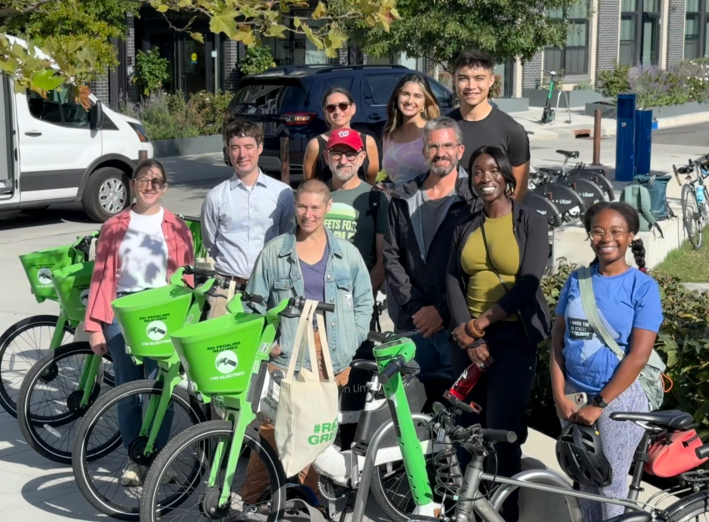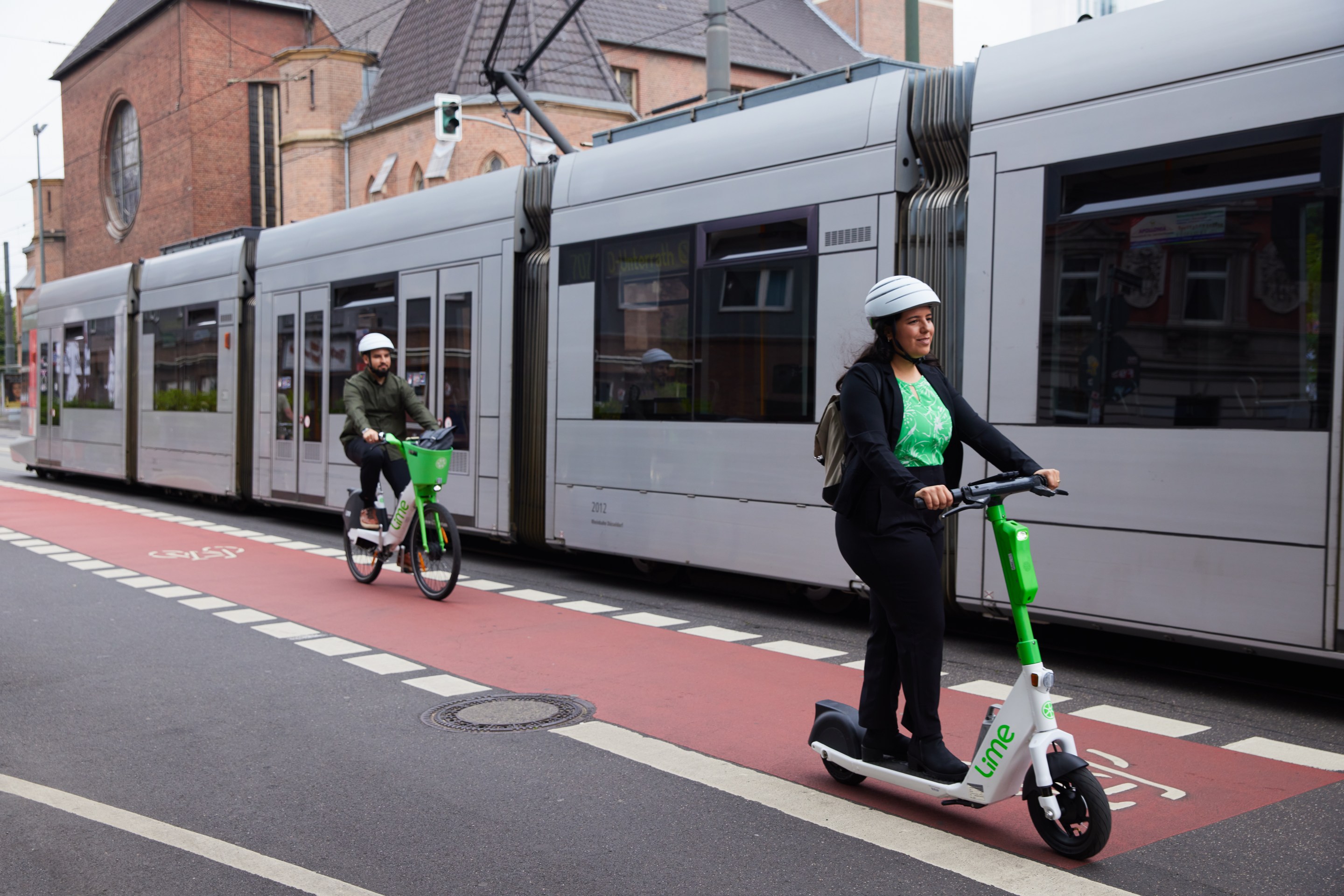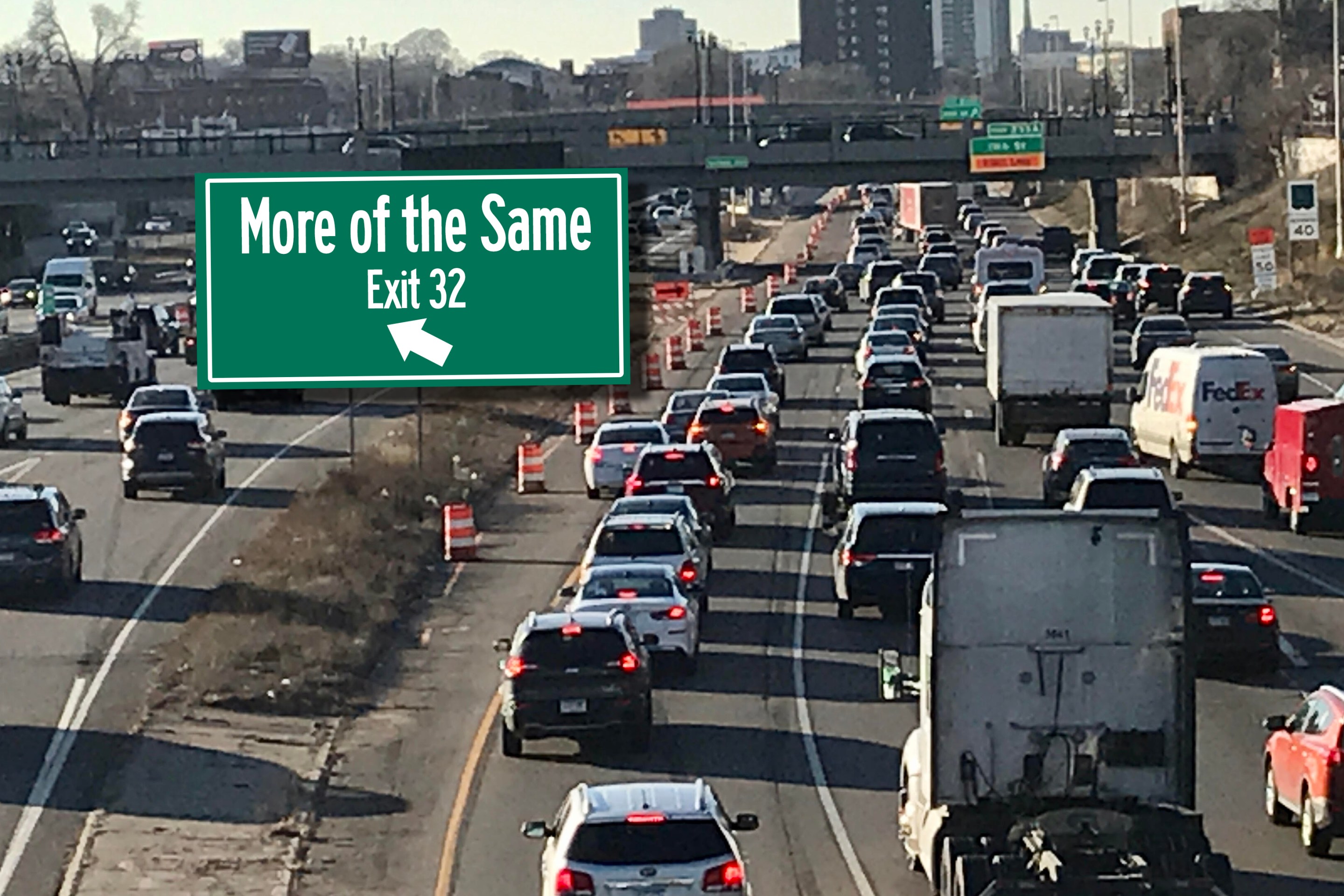For one week this fall, elected officials, community leaders, and residents across the United States did something simple but powerful: they left their cars parked.
From September 29 to October 5, America Walks’ Week Without Driving challenged people in power to experience their communities the way nearly one-third of Americans already do, without the ability to drive. That includes seniors, youth, people with disabilities, and low-income families. For many, driving isn’t a choice; it’s simply not an option.
As someone who works in sustainable transportation, I see every day how much our infrastructure still assumes everyone can or should drive. This weeklong challenge flips that assumption, celebrating progress we’ve made on alternative, sustainable transportation but also identifying where cities fall short and what they could look like if we built them for everyone.
This year, Week Without Driving had its biggest reach yet thanks to a national partnership between America Walks and Lime. Lime was the campaign’s title sponsor, supporting local events, offering discounted rides, and helping amplify the stories of people choosing sustainable, car-free travel.
By helping participants get around on shared e-bikes and e-scooters, Lime’s involvement turned the challenge from a thought experiment into a real mobility experience, one where people could see how easy or difficult it is to navigate their cities without a car.
Experiencing the Challenge Firsthand
In Washington, D.C., community leaders and advocates joined a group ride hosted by Greater Greater Washington, including Advisory Neighborhood Commissioners from Georgetown and Congress Heights, as well as representatives from the DC Office of Disability Rights and the Department of For-Hire Vehicles.

In Seattle, Lime partnered with Seattle Neighborhood Greenways for a community ride from the Chinatown-International District through newly reopened bike lanes into SODO. Riders used Lime’s e-bikes and scooters to explore accessible routes and identify areas where more infrastructure is still needed. And in Nashville, Councilmember Erica Gilmore joined Lime for a ride-along that brought together local residents, advocates, and media.

What the Week Revealed
For many participants, the experience showed how much of daily life becomes more complicated without a car. Getting to work, buying groceries, or reaching a doctor often means crossing unsafe streets, waiting on unreliable buses, or paying for expensive rideshares.
These challenges are magnified for those who already rely on walking, rolling, or transit, and even more so for Americans with disabilities. But they also show the opportunity ahead. When we invest in protected bike lanes, wider sidewalks, accessible crossings, and dependable transit, we make cities more livable and affordable for everyone, including drivers.
Micromobility — including shared micromobility — plays a key role in that system. E-bikes and e-scooters extend the reach of public transit, helping more people get to and from bus and train stations affordably and sustainably.
In cities like D.C. and Seattle, where local governments have invested in bike infrastructure and worked closely with operators, the results are clear: more people riding, fewer short car trips, and lower-emission choices being made.
Moving From Challenge to Change
The Week Without Driving is about awareness, but it’s also about accountability. When city leaders spend a week navigating their communities without a car, they see the missing crosswalks, narrow sidewalks, and disconnected transit routes that millions face every day. That firsthand experience is invaluable when those same leaders make policy and funding decisions.
Lime’s role in the campaign wasn’t about promotion. It was about showing what’s possible when the public and private sectors work together toward a shared goal: safer, more accessible cities.
Across the U.S., thousands of riders took advantage of discounted rides, and hundreds of local organizations promoted the challenge in their communities. This national effort brought together more than 550 organizations in all 50 states.
That kind of momentum sends a message: the movement for safer, multimodal streets is growing fast.
If we want cities that work for everyone, whether they drive, walk, roll, or ride, we have to keep reimagining transportation systems that serve people, not just cars. The Week Without Driving might only last a week, but the lessons from it can change how we design our cities all year long.






